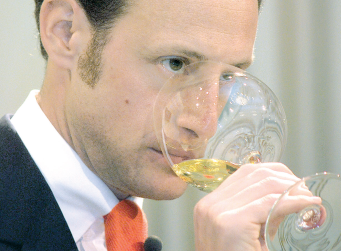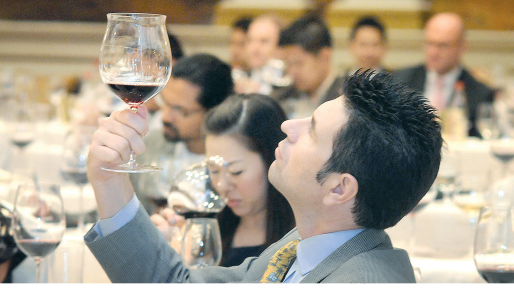Riedel’s crystal glasses are designed to deliver wine at its best – and stave off heartburn too
The Nation
May 2, 2011
“Did you taste the blackberries and cherries?” Maximilian J Riedel asked after his master-class students had sipped a little pinot noir.
Yes, they did, and thanks to the special wineglasses his firm makes, there would be none of the heartburn that often results from pinot noir’s high acidity and low tannins.

“If you can balance the aromas, your brain won’t detect the acidity and you won’t get heartburn,” Riedel said. “That’s when you decide you can’t live without pinot noir!”
He’s the chief executive at Riedel Crystal of America, which produces high-quality crystal wineglasses, an extension of the 250-year-old family business. It was Professor Claus Riedel who decided that the shape of the glass affects the perception of the wine, and who in 1961 introduced this revolutionary concept in crystal. The firm produced a line of
glasses in different sizes and shapes to match specific grape varieties.
“My grandfather created the world’s first gourmet glasses, and showed how it’s possible for the shape of a glass to influence the perception of aromas,” Maximilian Riedel said on his recent Bangkok visit.
“My father Georg then continued the family business, and ultimately passed the torch on to me.”
Three centuries ago the Riedel family was making glass jewellery before moving into the manufacture of perfume bottles in the 18th century in what was then Czechoslovakia. World War II halted the business but Grandfather Claus and his son Georg revived it at the end of hostilities, until, as Maximilian said, “When the Russians took over Czechoslovakia my grandfather was put in a gulag for 10 years.”
Claus carried on, adding beauty to the glasses’ function, and today Maximilian carries on, conducting wine-tasting master classes that demonstrate the Riedel stemware’s magic.
He joined the family business at age 20 and introduced Riedel products in Dubai before spending two years in Paris with Riedel’s French importer, Ercuis, where he managed sales and conducted tastings.

In 2004 he introduced the successful, if somewhat controversial, Riedel “O” line. It pushed US sales to an estimated US$34 million that year. How the shape of a wineglass influences the wine’s taste isn’t the result of science, Maximilian said, but rather extensive experience in putting winemakers and designers at the forefront in making glassware.
“My grandfather spent years fine-tuning different shapes of wineglasses to match different grape varieties. It wasn’t about science, but experience.”
Wine will taste different in a plastic cup, a tumbler and any shape of glass. Riedel glasses are designed for only specific grape varieties, and cannot be used for others.

At the master class in Bangkok, organised by Ital-Thai Industrial, Maximilian had three types of Riedel glasses from its Sommeliers series: the Montrachet/Chardonnay 4400/7, the Burgundy Grand Cru/Pinot Noir 4400/16 and the Bordeaux Grand Cru/Cabernet/Merlot 4400/00.
Each of these glasses was placed alongside one non-Riedel glass and a plastic cup. The aromas and texture of pinot noir, a bitter wine, became balanced in the Riedel glass – the 4400/16.
“The glass balances the aromas as the wine touches the palate. It removes the fire on the palate that otherwise exists with a different wineglass,” he explained.
The pinot noir tasted distinctly less pleasant in another brand’s glass, which had a different shape, and it was comparatively awful in the plastic cup.
“You get the right mouth feel and texture with the Riedel glass,” Maximilien said.
“This shows how the wine feels on the palate from one glass to another. A glass influences the length of aftertaste by its shape.”
In the case of pinot noir, the glass helped balance the sugar, acidity, mineral content and aromas. There was little acidity on the palate.
“It brings forward the fruit, the sugar. When the wine meets your palate, the brain snaps a profile picture that identifies the flavours – sweet, salty, sour and bitter.”
